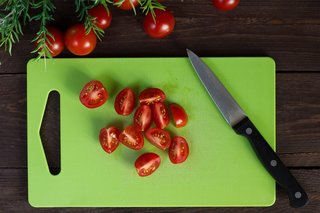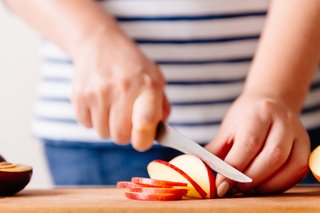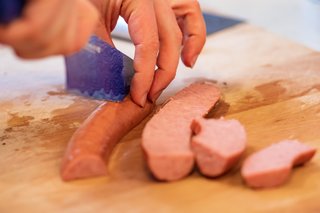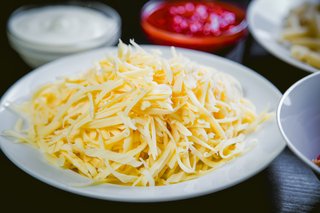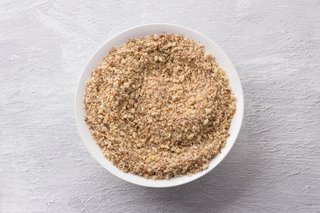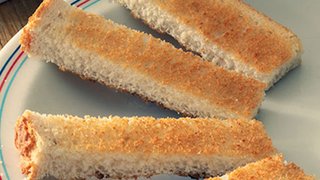- Choking and gagging
- Food allergies
- Food and drinks to avoid
- Preparing food safely
- Storing and reheating food
Preparing food safely
Find out how to prepare and serve food safely for babies and young children – including fruit, vegetables, meat, fish, cheese, nuts and other snacks – to reduce the chances of choking.
Reduce the risk of choking
For babies and young children, food can be a choking hazard, especially when they do not chew their food well.
Choking can happen with any foods, but firm foods, bones and small round foods can be more risky.
When preparing food for your child, remember to follow these steps:
- introduce solid foods from around 6 months
- think about the size, shape and texture of food – cut it into narrow batons, and avoid round shapes and firm foods
- use a highchair – make sure babies and young children are alert and seated safely upright in a highchair while eating
- always supervise babies and young children while they're eating
- role model chewing and swallowing – encourage babies and children to chew and swallow food properly, and not to rush eating
Read more about choking and gagging on food.
How to serve food safely
Follow our guidance on preparing and serving food safely to reduce the risk of choking.
We also have lots more information on food and drinks to avoid.
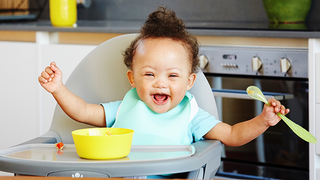
Ready or not weaning quiz
Take our quick quiz to see if your baby might be ready to start weaning, and learn more about the signs and common myths of introducing solid foods.
